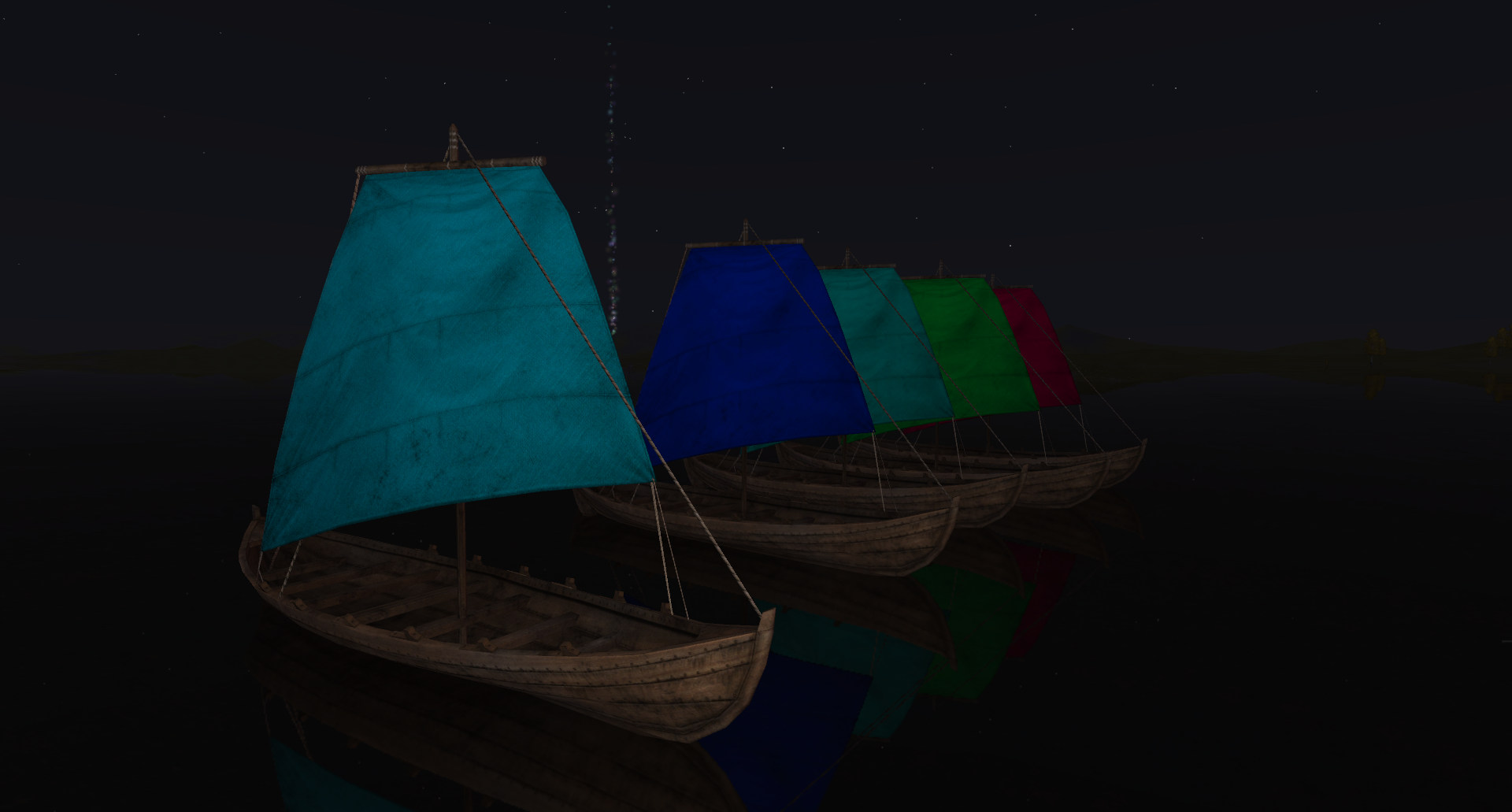Gobbler Wand
The Gobbler wand is built using a shaft and a carving knife or crude knife. It may be improved. If the gobbler wand is selected fires may be fuelled with them, either intentionally or accidentally.
To feed the Gobbler activate the Gobbler wand, select the items for donation by clicking on them, then click on the wand again and select “Feed the Gobbler”. This gives a confirmation dialogue window. Items may be deselected for feeding in this window or, at the bottom of the window, click the “Feed” button. If in doubt close the window. Gobbler scores are immediate. At the end of the 20 minute request time a score update will be given, in green text in the Gobbler channel.
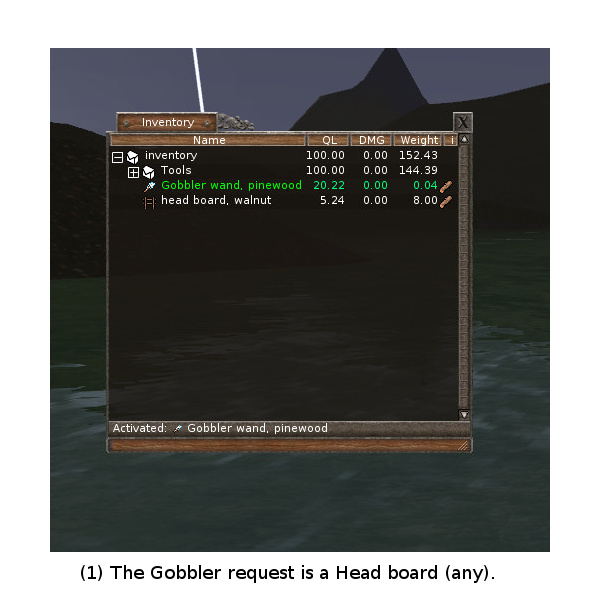
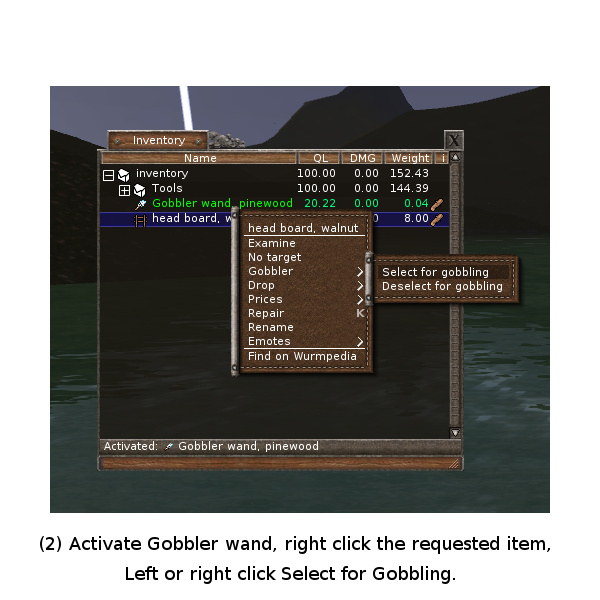
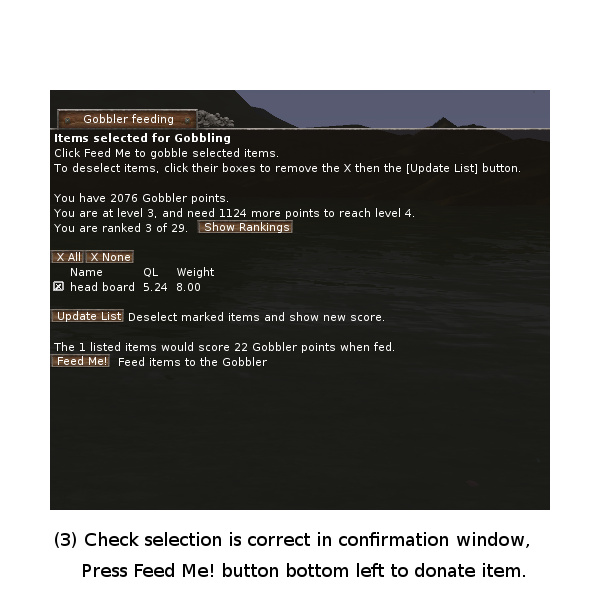
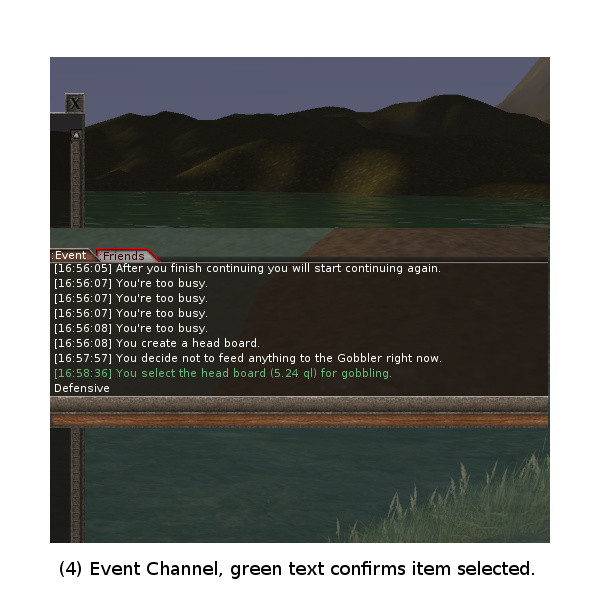
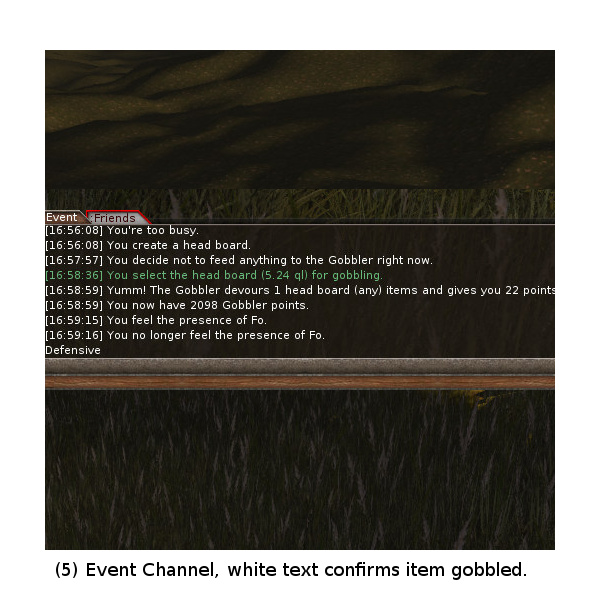
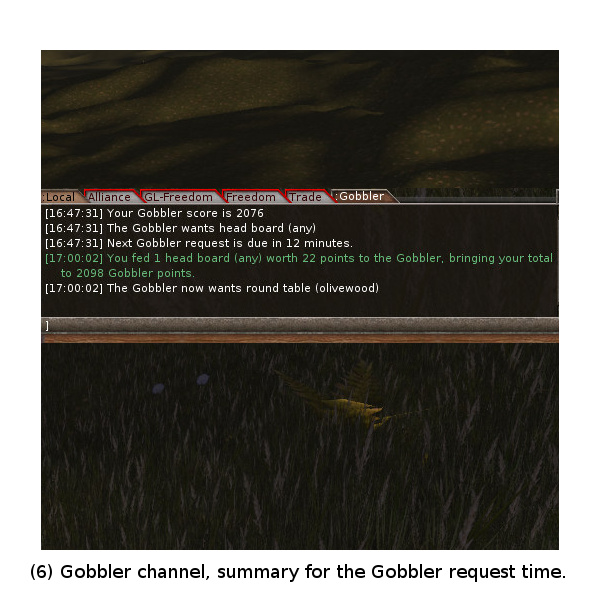
The Gobbler wand also has a menu to allow the player to collect a snack each day, ceasing the need to travel to an Arboretum.
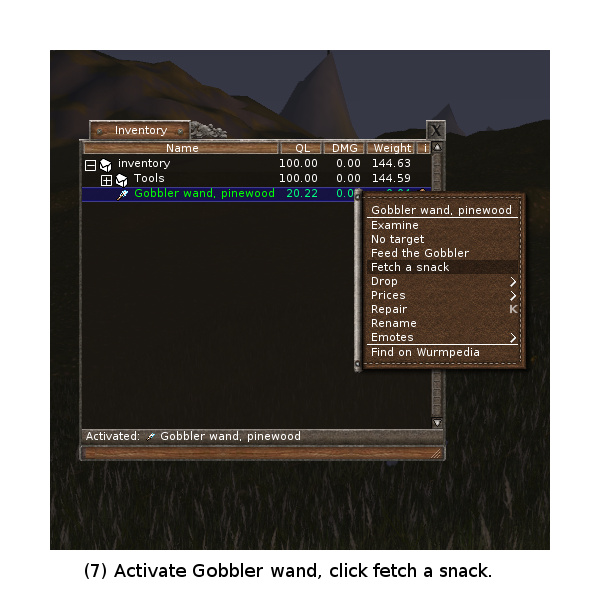
The Gobbler wand may also be used to send coins to the bank account from the location of the player, ceasing the need to travel to the bank account token. The coins need to be in the player’s inventory.
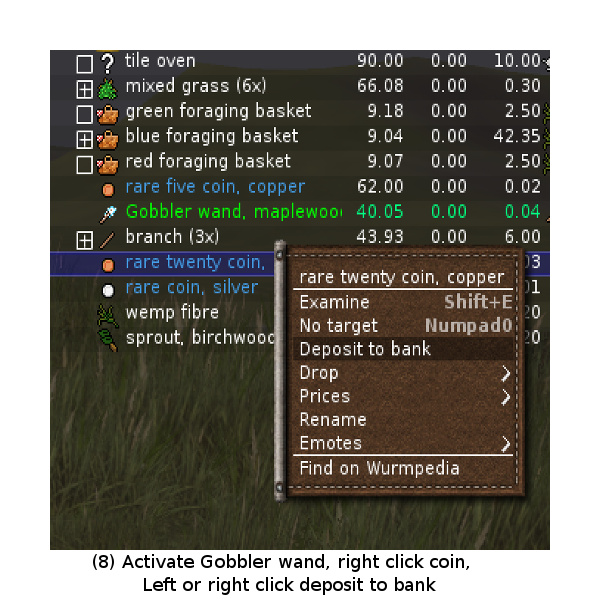
Magical Sack
Along with their pelt, each player on the Open Gobbler Server will be issued with a magical sack in their inventory.
This special sack is magical because it is one that holds a surprisingly large amount and will also fit on a saddle. It will allow the horse to effortlessly carry heavy treasure chest items such as logs and ores.
Horses need to be tamed to fit the magical sack to the saddle, and to use it. Tamed horses may be set to go offline when the player does. This is recommended if the horse is not on a deed, or hitched to a cart.
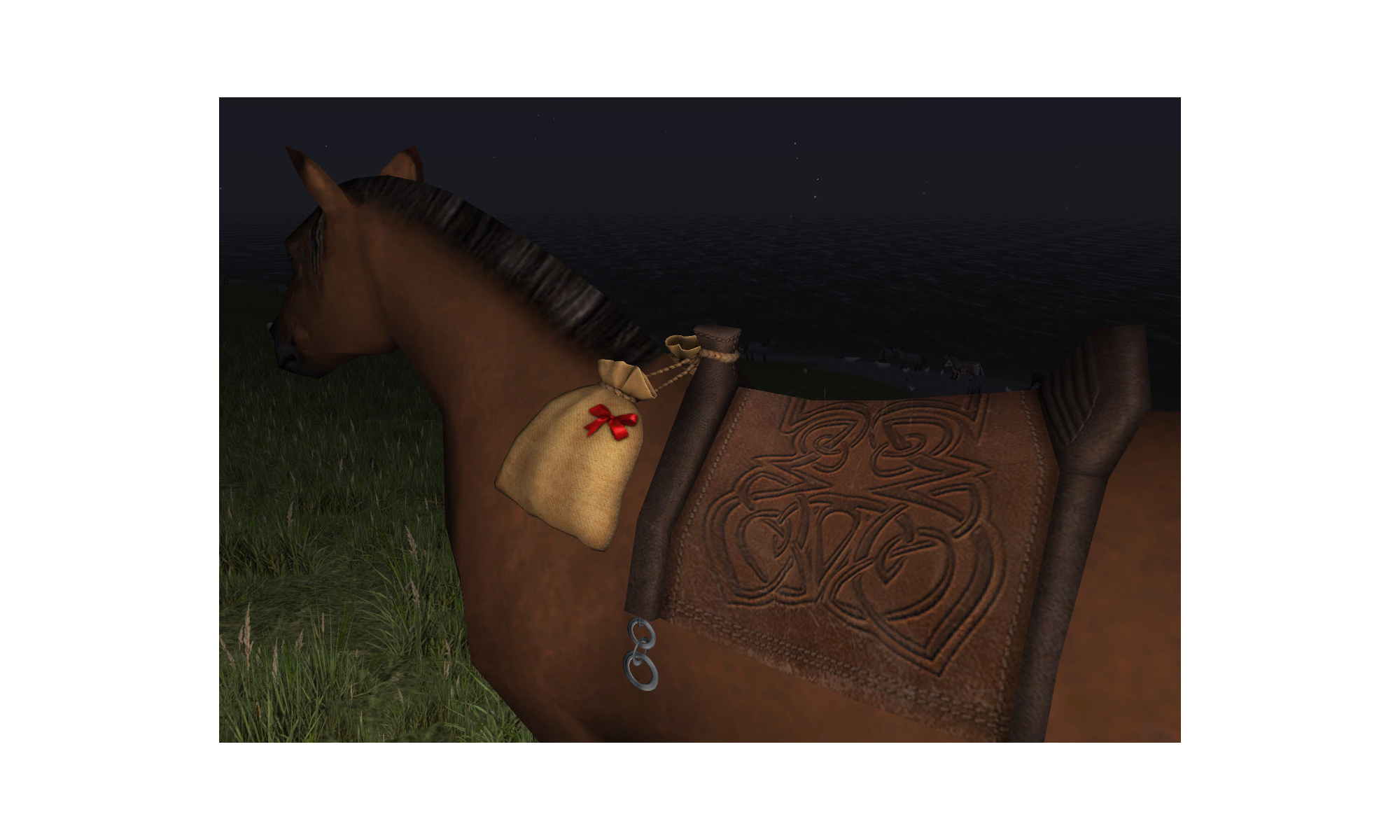
Foraging Baskets
Foraging baskets allow storage of any items that can be found by foraging or botanising. Some examples of multiple source items are cotton, berries and basils. The baskets will still store these items if they were obtained by harvesting crops, bushes or planters. The baskets are a portable container, weighing 2.5 kg empty. The amount of items stored depends on volume. They will be particularly useful for cottons, holding about 90, and for berries holding 100. There are three colours of foraging baskets, depending if woad (Blue), pea pod (Green) or raspberry (Red) was used to build them along with with 5 wemp fibres. They may be dropped on the ground and as well as being decorative, will assist players to reduce early camp chaos. The baskets are non-improvable, repairable and on the Gobbler’s feed list.

Clay map and Portable tile ovens
The underlying clay-colour map to fire pottery tiles repeats itself in grids of 125*125 tiles. Every part of the map has an associated colour spectrum. To view a spectrum click “choose tile colour” on the portable tile oven and the spectrum of where the oven is dropped will show.
The centre of each grid is in the grey spectrum and has the coords of 125 plus 62. The corners and edges are multiples of 125. The corners have spectrum of red, blue, green and yellow. Edges have spectrums lying between the corners. To view coords use a dioptra and click the corner of 4 tiles.
Here is an example of what is in my camp. 937 is the east/west coordinate.
5187,937 gray; 5156,937 Dark Sea Green; 5125,937 Chartruse.
More north of chartruse will be yellowish going towards the yellow corner and more south of chartruse will be greenish going towards the green corner. Far out of sight way over past gray will be the red and blue corners.
The Gobbler requests pottery tiles frequently so becoming familiar with the map is a good idea. Portable ovens may be dropped and fired under the lakes and sea. Also a good idea is to label portable ovens in case they are mislaid, they show up more easily in the database for retrieval.
Players may request a visit from Data to relocate arboretum. They make great signposts for coloured corners. After a relocation there is a need to log in and out again because as far as the client is concerned arboretums are not supposed to move. If the arboretum is relocated its menu will not be available until the next server restart.

